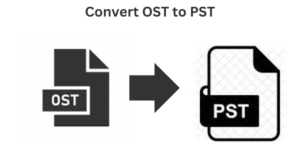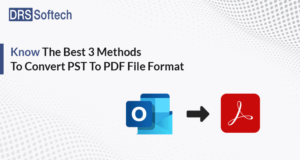Introduction
Lotus Notes, now known as HCL Notes, is a popular email client used by many agencies for verbal exchange and collaboration. However, like numerous software applications, Lotus Notes isn’t evidence of mistakes and troubles that might disrupt your workflow. In this newsletter, we are able to talk about the pinnacle of the five most common Lotus Notes mistakes and their answers.
“Database Corrupt: Cannot Allocate Space”
This error message shows up when your Lotus Notes database grows too big and there isn’t always sufficient loose area to add new facts. To deal with the trouble,
Solution: Use the incorporated compact characteristic to reduce the dimensions of the database. Go to File > Database > Properties, click the ‘Info’ tab, after which select ‘Compact.’ This will unfasten the area and likely clear up the error.
“File does not exist.”
This mistake suggests that Lotus Notes isn’t always able to discover a selected record or resource. It may be because of numerous problems, collectively with a missing database or a corrupt hyperlink. To restore this:
Solution: Verify that the record or resource in the query exists. Ensure the file direction is correct and the report hasn’t been moved or deleted. If the problem persists, you can repair the report from a backup.
“Replication or Save Conflict”
Replication conflicts occur at the same time as changes made to one-of-a-kind copies of a database aren’t synchronized. This blunder message can disrupt collaboration. To clear up this problem:
Solution: Review the conflicting files and manually merge the modifications. To avoid future conflicts, speak with other users to coordinate edits and use proper replication settings.
“Notes Error: You Are Not Authorised to Perform That Operation”
This mistake message frequently takes place even as a user tries to get the right of entry to a useful resource for which they do not have the essential permissions. To cope with this problem:
Solution: Check the purchaser’s right to access rights and ensure they have the required privileges to perform the operation. You can also seek advice from your administrator to regulate the character’s access settings.
“Notes Error: Document Has Been Deleted”
This mistake indicates that Lotus Notes is trying to get access to a record that does not exist within the database. It can happen due to unintended deletions or factual corruption. To remedy this problem:
Solution: Try looking for a duplicate of the deleted report in your trash or recycling bin and repair it. If the document is completely deleted, you may want to speak with your IT department about recovering it from backups.
Limitations of the Manual Method to Fix Common Lotus Notes Error Messages
While the manual strategies defined above can help clear up common Lotus Notes error messages, they have their barriers. Here are a few drawbacks to bear in mind:
- Complexity: Manual strategies can also require technical statistics, and clients without substantial IT records can also find it difficult to observe the steps appropriately.
Time-Consuming: Resolving Lotus Notes errors manually may be time-consuming, in particular, while handling huge databases and complicated issues. - Data Loss Risk: Handling mistakes manually may additionally result in record loss if not finished efficiently, specifically during obligations like database compacting or report healing.
Using Professional for NSF to PST Converter
To simplify the procedure of managing Lotus Notes mistake messages and to ensure record integrity, use DataVare Lotus Notes to Outlook converter software. This software is designed to transform Lotus Notes NSF files to Outlook PST format, making it less hard to access your information in a more commonplace e-mail client.
Some Easy Steps of This Software:
- Download and install the NSF to PST Converter for your PC.
- Launch the software and pick the NSF file you want to transform.
- Choose the vacation spot folder for the PST document.
- Click the “Convert” button, and the software will begin the conversion method.
- Once the conversion is complete, you may import the PST file into your Outlook email.
Conclusion
Common Lotus Notes blunders can disrupt your workflow and lead to frustration. However, with the proper information and tools, you could resolve these problems effectively. This article noted five common Lotus Notes mistakes and their answers. While guide strategies are available, they have limitations, and the use of expert software applications like DataVare NSF to PST Converter can streamline the machine, lessen the risk of data loss, and make your transition to a different email client smoother. Don’t permit Lotus Notes errors to hold you back; use the information and tools at your disposal to preserve your e-mail verbal exchange on foot.






More Stories
Best Methods to Import OST Files to Hotmail
Simplifying EML to PST Conversion for Outlook 2016 or 2019
Reliable & Efficient Steps for EML File Transfer to Outlook on Mac/Windows